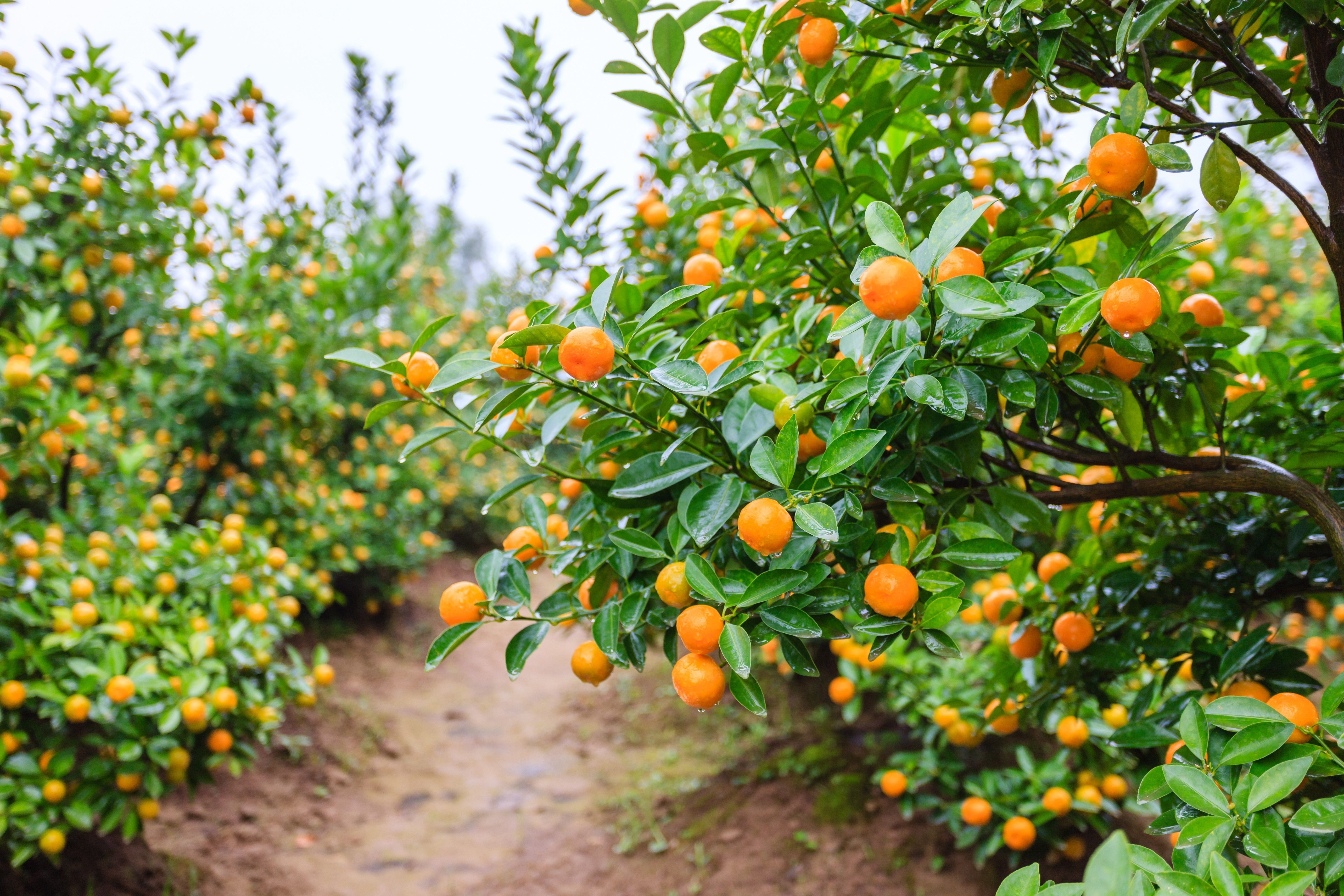
“Citrus Under Protective Screens,” or CUPS, can help keep away a pin-head-sized insect that causes citrus greening, University of Florida scientists say.
CUPS prevent the Asian citrus psyllid from reaching citrus trees and infecting them with greening, or Huanglongbing (HLB), said Arnold Schumann, a University of Florida soil and water sciences professor at the UF/IFAS Citrus Research and Education Center. Citrus greening threatens to destroy the state’s multibillion-a-year citrus industry, according to UF/IFAS researchers.
Schumann co-authored a recently published Extension document that summarizes UF/IFAS research into CUPS and explains the economics of the system.
Three Florida growers are operating 50 acres of commercial CUPS, Schumann said. Another 120 acres of CUPS citrus production are under construction for planting in 2018.
The structure and mesh account for most of the $1 per square foot cost of the CUPS system, said Ariel Singerman, a UF/IFAS assistant professor of food and resource economics at CREC and a co-author of the document. Using preliminary data available from Schumann’s pilot CUPS program, UF/IFAS researchers made projections for the remaining years of the investment and found that a price of $24.15 per box of fruit results in a grower breaking even.
“Given that current prices of specialty fruit are above that level, CUPS is profitable under current market conditions for growing those varieties,” Singerman said.
UF/IFAS researchers are working with growers to reduce the cost of screen house structures from $1 to 50 cents or less per square foot, Schumann said. They might import the screen or modify the pole-and-cable architecture to reduce the cost of materials, he said.
“We are developing CUPS for growing high quality HLB-free fresh citrus fruit, which sells at much higher prices than processed fruit,” said Schumann. “We consider CUPS as a medium-term solution for growing fresh fruit in HLB-endemic regions like Florida, where currently no other viable solutions exist.”
About 90 percent of the citrus produced by Florida growers goes to make juice, while the rest, referred to by the industry as fresh citrus fruit, is consumed as food, UF/IFAS researchers say.
In some states like California, fresh fruit production accounts for nearly all the consumption, Schumann said. UF/IFAS researchers and growers won’t know for certain whether citrus farmers can maintain a profit by using the screening system to keep out the psyllid for another seven to 10 years, he said. Every year that we spend researching the CUPS system rapidly improves our forecasting ability, and further refinements bring us closer to the reality of a sustainable, profitable solution, Schumann said.
Many factors also play a large role in the effectiveness of CUPS, said Schumann. Those include optimizing fertigation – when growers inject fertilizers and other water-soluble products into an irrigation system. CUPS success also hinges on improved planting density to produce high, early yields and choosing varieties with the best consumer preference – for example, those that are seedless, easy peeling, and with the legendary “fresh from Florida” taste.
“Meanwhile our research strives to optimize those factors affecting profitability that we can control,” Schumann said. For example, growers have little control over fruit price, he said. But by planting early maturing varieties picked before competitors’ fruit in other regions like California, growers in the Sunshine State can get better market prices, he said.
By Brad Buck
System Screens Out Deadly Ditrus Greening-carrying Insect was originally published on the University of Florida's website.